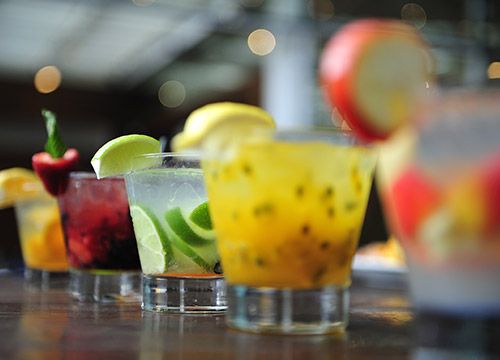Selling Mixed Liquor Comes with Double Paperwork
By Andy Tiwari

Have you noticed that your Margarita or Long Island Iced Tea got more expensive this year? Your favorite drink will likely cost around 1 percent more thanks to Texas House Bill 3572, which took effect on Jan. 1.
This new law modified the Mixed Beverage Gross Receipts Tax and created a new Mixed Beverage Sales Tax of 8.25 percent. The Mixed Beverage Gross Receipts Tax – payable by the establishment selling mixed beverages – went from 14 percent down to 6.7 percent. Most drinkers probably didn’t even realize their cocktail previously included a 14 percent tax levy because most bars and restaurants included the cost of the tax in the price of the beverage and separately collected and paid the tax to the state.
But the law says bars and restaurants selling mixed beverages can pass the new 8.25 percent Mixed Beverage Sales Tax directly on to customers, and in doing so, they have to clearly explain how the consumer is being taxed. Mixed beverage permit holders still have the option of including the 8.25 percent in the cost of the drink or charging it separately, but they need to explain on the receipt that the tax is being collected.
Theoretically, the bill creates uniformity and transparency among businesses that sell “hard liquor,” beer, and wine. Those that sold beer and wine previously were accustomed to collecting just the 8.25 percent sales tax from drinkers (and charging for it separately).
The good news for businesses is the potential for higher revenue. First, most consumers probably won’t notice the price hike anyway. Second, since consumers are accustomed to paying sales tax in general, why wouldn’t a permit holder simply pass the new tax to the consumer instead of lowering prices; blame the ‘new law,’ and keep prices the same as before? Many articles suggest this is precisely what is occurring. The consumer could also score a victory if the law makes the market more competitive for beer and wine pricing.
The bad news for businesses lies in how the tax is collected and reported – this is where it could get dicey. As any permit holder can attest, the Texas Alcoholic Beverage Commission (TABC) demands strict compliance with its regulations, and this new law created some interesting hoops for business owners to jump through.
First, most large drinking establishments now must submit two returns monthly: the Mixed Beverage Sales Tax along with the Mixed Beverage Gross Receipts form.
Second, each receipt given to customers must clearly state how you are collecting the Mixed Beverage Sales Tax – either the tax was included in the cost of the drink or it’s a separate line item added to the subtotal. It appears that receipts also now need to clearly state how the business is paying the 6.7 percent Mixed Beverage Gross Receipts Tax (this is a little ambiguous under current guidelines). Thus, the typical receipt could have three references to tax: 1) the local sales tax; 2) the Mixed Beverages Sales Tax; and 3) a statement regarding the amount of tax the business will be paying to the state (the Mixed Beverage Gross Receipts Tax).
This has the potential to slow down transactions, especially with customers who pay with cash (and who probably cared little for that receipt anyway) and at establishments that don’t use sophisticated payment systems. It also means that establishments have to re-do receipts, adjust point of sale systems, re-train staff, and probably even consider re-pricing some items. Businesses will also have to decide whether to separately charge for the tax or include it the drink price as before.
So while selling liquor is a necessity for many eateries to stay competitive, the new law will require careful compliance. As always, consultation with an attorney or other professional in this area is advised.
If you need legal advice, schedule a meeting with Tiwari + Bell PLLC through our website or by calling (210) 417-4167
